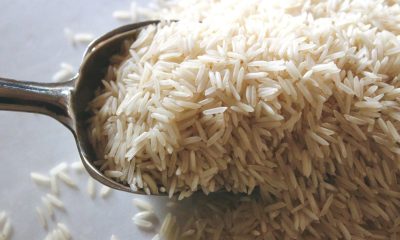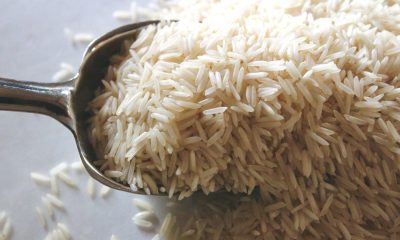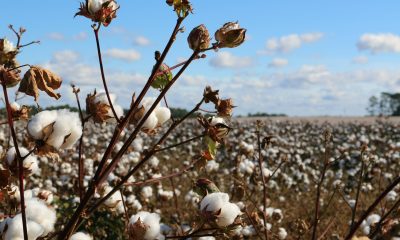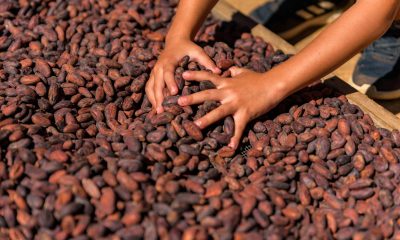Markets
Rice Prices Plummet as Hurricane Beryl Brings Beneficial Moisture to Growing Areas
Rice prices dropped sharply after July 4th, as Hurricane Beryl is expected to miss damaging growing areas and bring beneficial moisture. Improved US weather and anticipated big crops, following earlier threats from heavy rains, suggest that current supply tightness will ease, leading to increased production and significantly higher supplies this Fall.
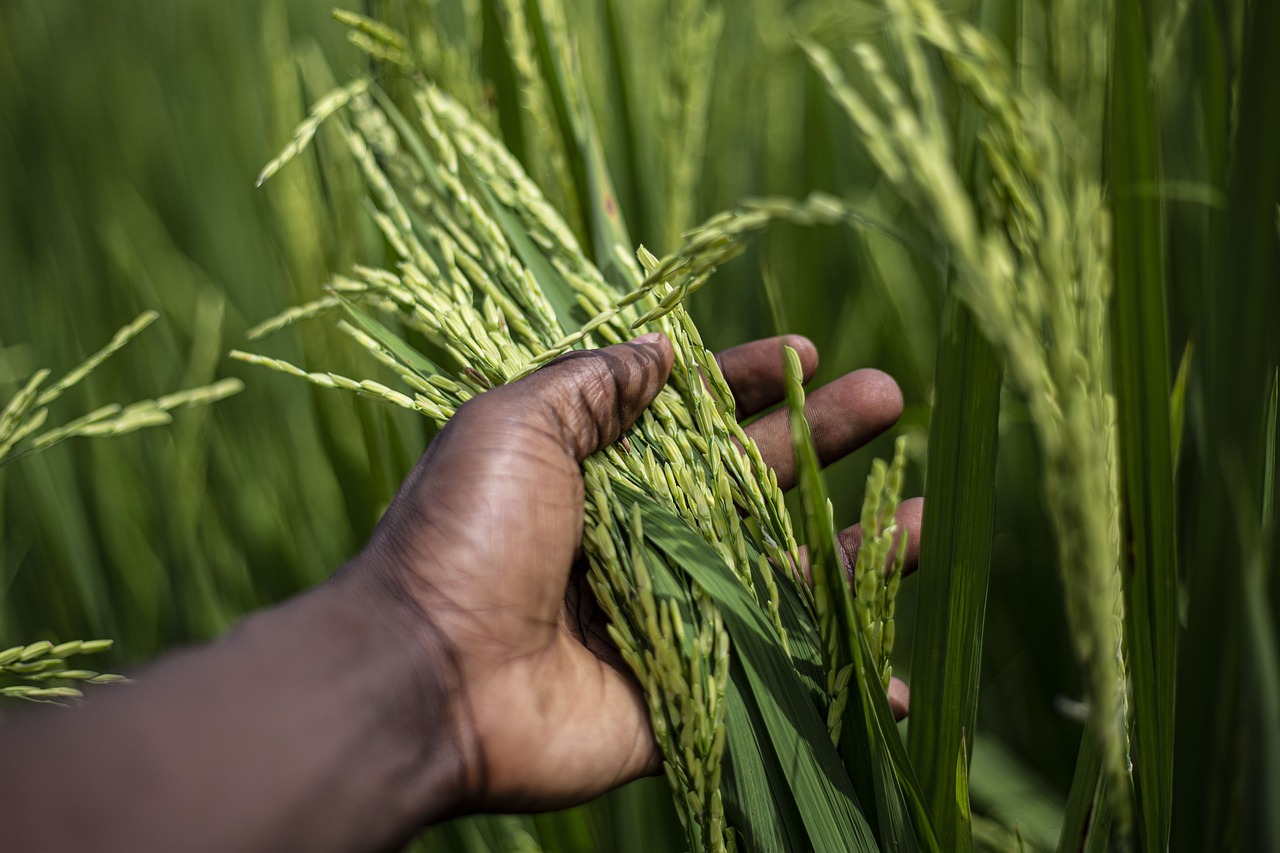
Wheat: Wheat was higher in all three markets last week on reports of hot and dry weather in eastern Europe and Russia and too wet weather in France that is affecting world production estimates. Russia is likely to expand the war and has reportedly started to make some threats against the US and NATO countries. USDA showed that the quarterly stocks were a little higher than expected but that planted area was a little below expectations.
The US harvest is expanding through Kansas and is now more than 50% complete for the country as a whole and adverse world growing conditions are still around. There were more reports of hot temperatures coming this week to Russian growing areas. It has also been very dry there. Eastern Europe is also hot and dry. Western Europe has seen too much rain.
Weekly Chicago Soft Red Winter Wheat Futures

Weekly Chicago Hard Red Winter Wheat Futures
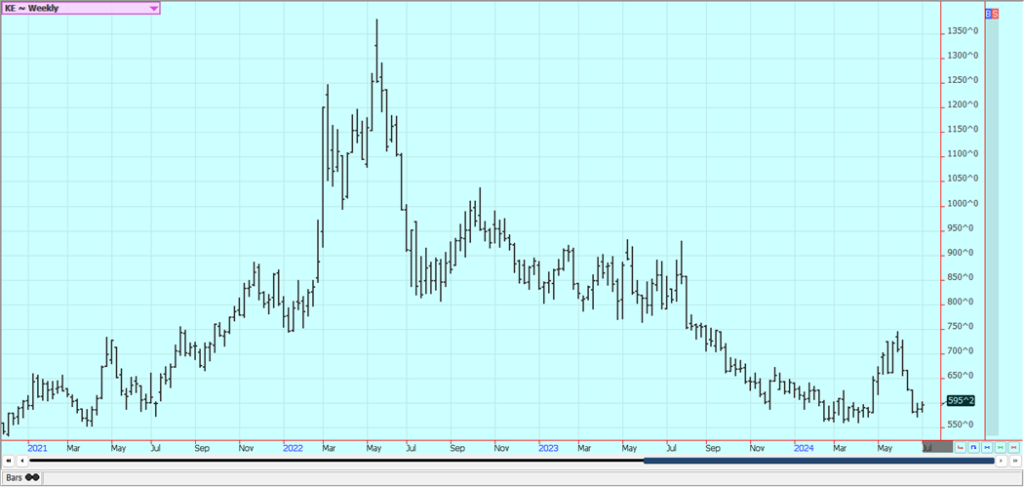
Weekly Minneapolis Hard Red Spring Wheat Futures

Corn: Corn and Oats closed higher in response tp longer range forecasts calling for hotter and drier weather for the Midwest starting in the second half of July. Weakness was based on higher than expected planted area estimates released by USDA along with sharply higher than expected quarterly stocks data and strength coming from rallies in Soybeans and Wheat.
The US weather features moderate temperatures and increasing chances for rains. Northern areas such as southern Minnesota that have had way too much rain and flooding is still reported. The US Midwest is seeing uneven growing conditions and so are Southeast growing areas. However, USDA kept crop conditions unchanged at high levels and the market sees no real problem at this time.
Weekly Corn Futures
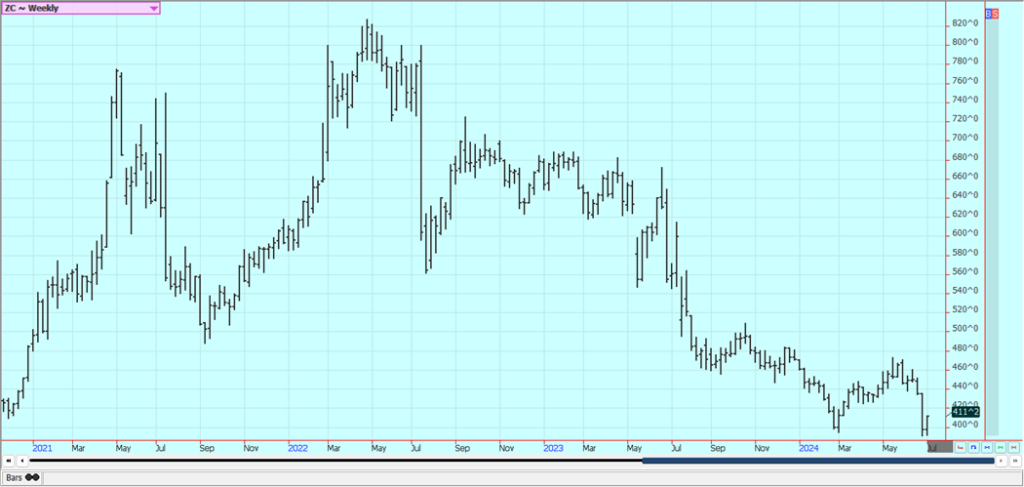
Weekly Oats Futures
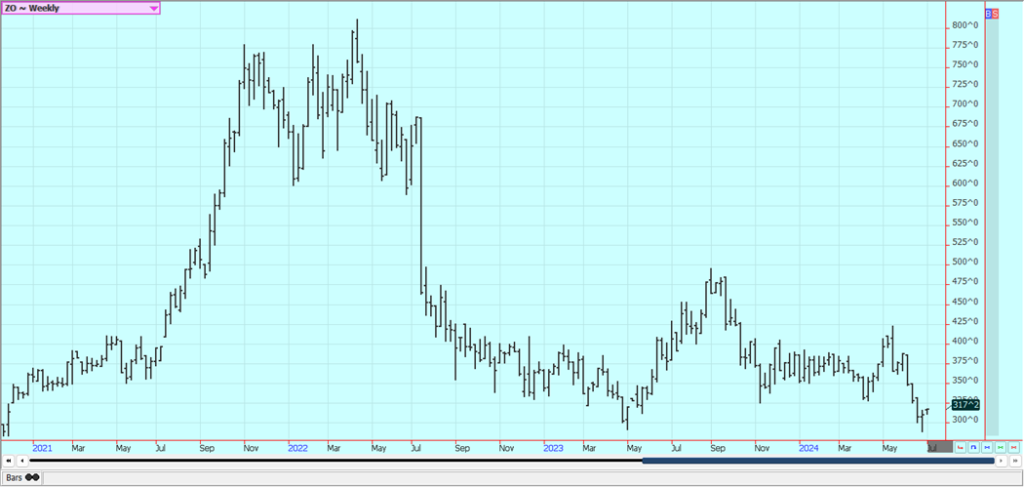
Soybeans and Soybean Meal: Soybeans and the products closed higher. Deteriorating growing conditions in the US and forecasts for more heat and less rain in areas in the Midwest in a couple of weeks were supportive. USDA found less than expected planted area and slightly more stocks than had been expected by the trade. Precipitation chances are high in northern Midwest areas that have already been flooded.
Reports indicate that China remains an active buyer of Soybeans in Brazil but has cut back and increased purchases from the US on demand due to the tax issues in Brazil and on Brazil logistical concerns. Domestic demand has been strong in the US but has suffered as crushers were crushing for oil. Oil demand has suffered as cheaper alternatives for feedstocks hit the biofuels market.
Weekly Chicago Soybeans Futures
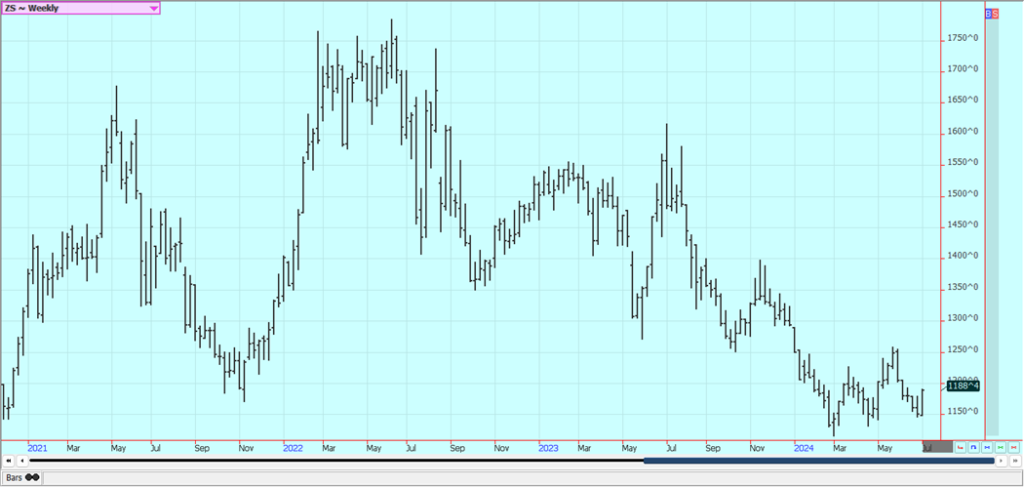
Weekly Chicago Soybean Meal Futures
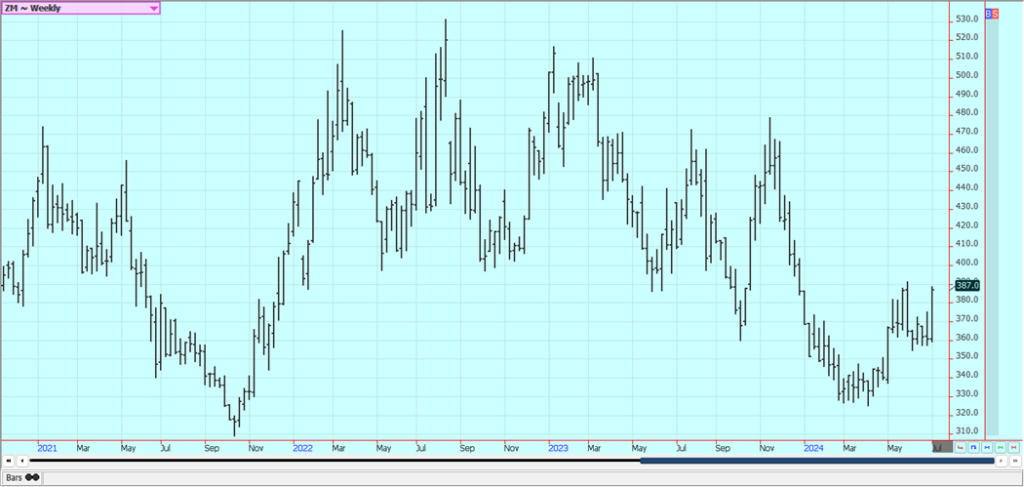
Rice: Rice closed sharply lower after the July 4th holiday as the market heard that Hurricane Beryl would miss growing areas with the damaging parts of the storm and might instead bring some beneficial moisture to growing areas. The US weather is now improved and big rice crops are expected once again after some big rains threatened rice crops earlier in the growing season. Supply tightness is expected to give way to increased production this year and greatly increased supplies this Fall.
Weekly Chicago Rice Futures
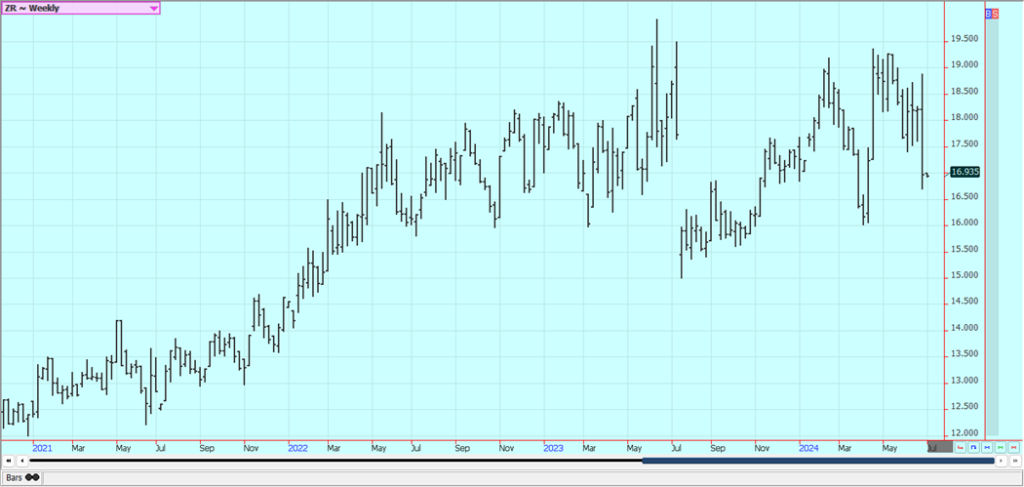
Palm Oil and Vegetable Oils: Palm Oil was higher last week and trends are up again. Export demand has been very strong in recent private reports but has been weaker in recent days. There is talk of increased supplies available to the market, but the trends are up on the daily and weekly charts. Canola was sharply higher last week along with US prices. The daily charts show that Canola trends are up.
Weekly Malaysian Palm Oil Futures:

Weekly Chicago Soybean Oil Futures
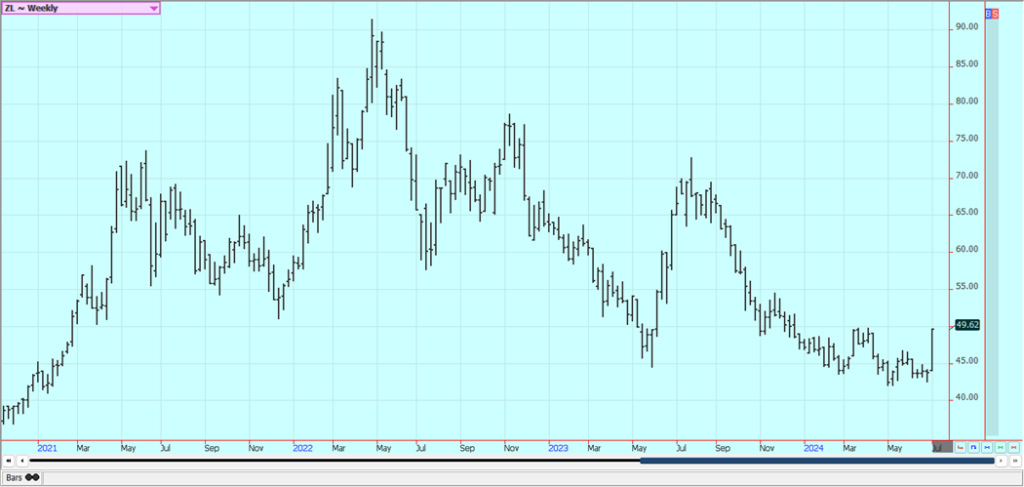
Weekly Canola Futures
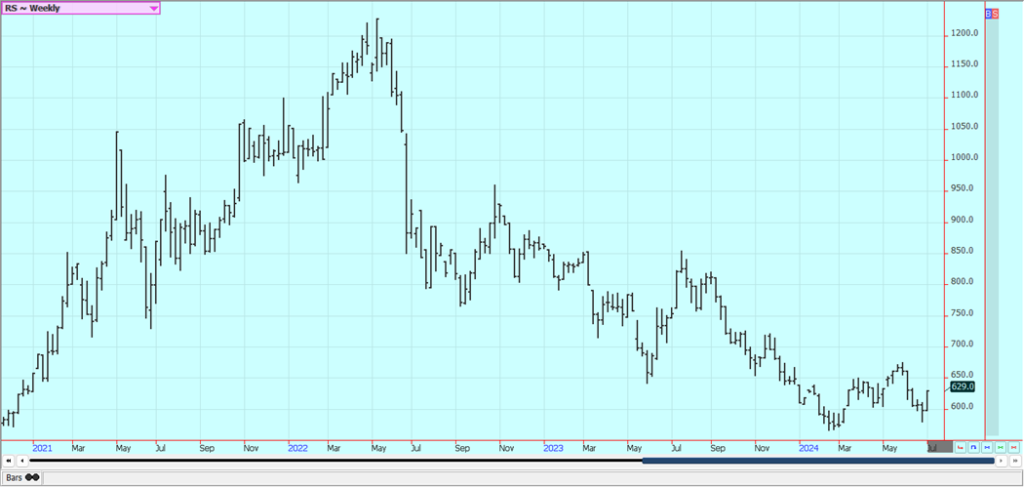
Cotton: Cotton was lower after the July 4th holiday on forecasts for Hurricane Beryl to move intzo the Mexican coast and only bring beneficial rains to important growing areas of Texzs in zthe next week. USDA showed a decrease in production conditions for the crops in its reports this week that were the result of some extreme weather seen recently in Texas and the Southeast.
The Delta should have the best looking crops right now. Demand has been weaker so far this year but there are hopes for improved demand with the lower prices. Chinese consumer demand has held together well, and Chinese demand for Cotton has started to increase.
Weekly US Cotton Futures
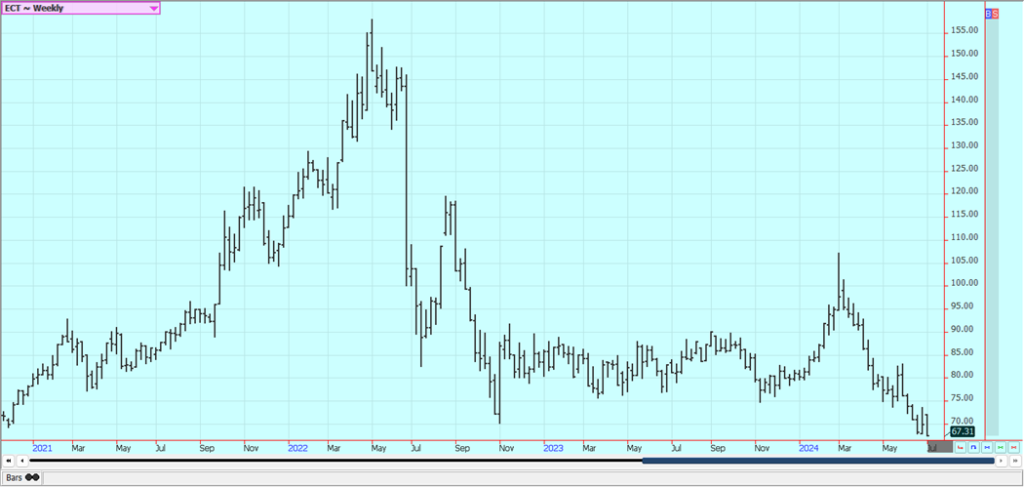
Frozen Concentrated Orange Juice and Citrus: FCOJ closed higher after the US holiday and trends are up again. The market remains well supported in the longer term based on forecasts for tight supplies and very hot weather in Florida. The reduced production appears to be at the expense of the greening disease.
There are no weather concerns to speak of for Florida or for Brazil right now. The weather has improved in Brazil with some moderation in temperatures and increased rainfall amid reports of short supplies in Florida and Brazil are around but will start to disappear as the weather improves and the new crop gets harvested.
Weekly FCOJ Futures
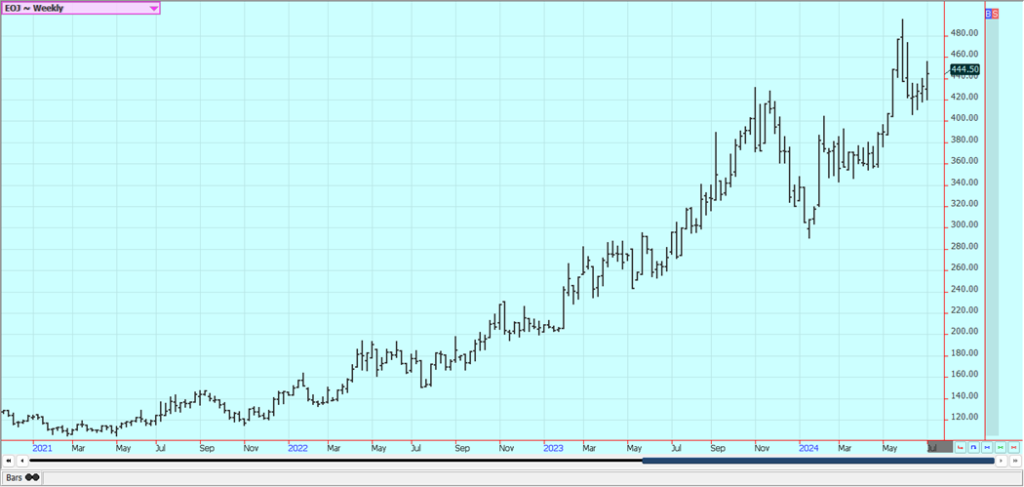
Coffee: New York and London closed higher as more reports of short supplies that could be made worse by ideas of reduced offers of Robusta are still in the market. The weather forecasters now say that conditions are good in Vietnam, but damage was done to crops earlier in the growing season. A little rain has been reported in Vietnam recently to help crops there. There were also reports of poor Robusta yields in Brazil during the harvest due to small bean sizes.
Weekly New York Arabica Coffee Futures
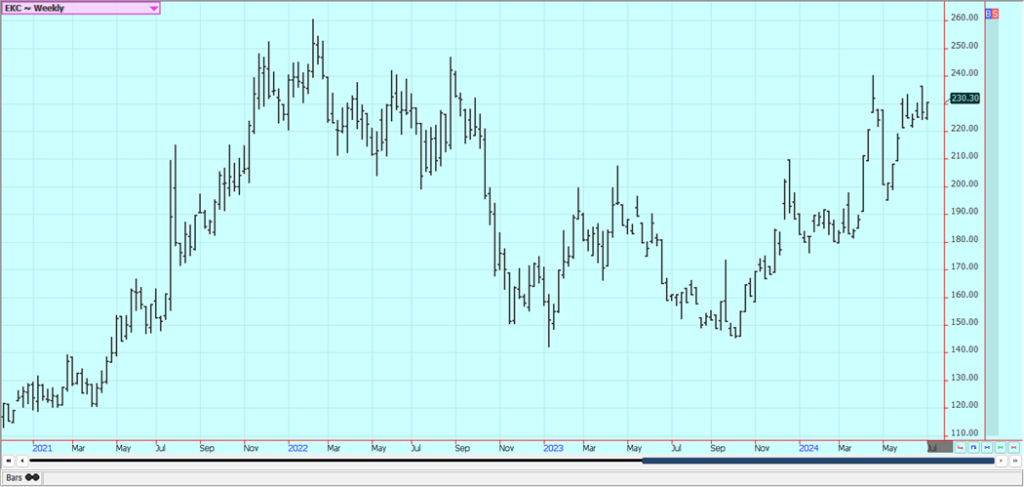
Weekly London Robusta Coffee Futures
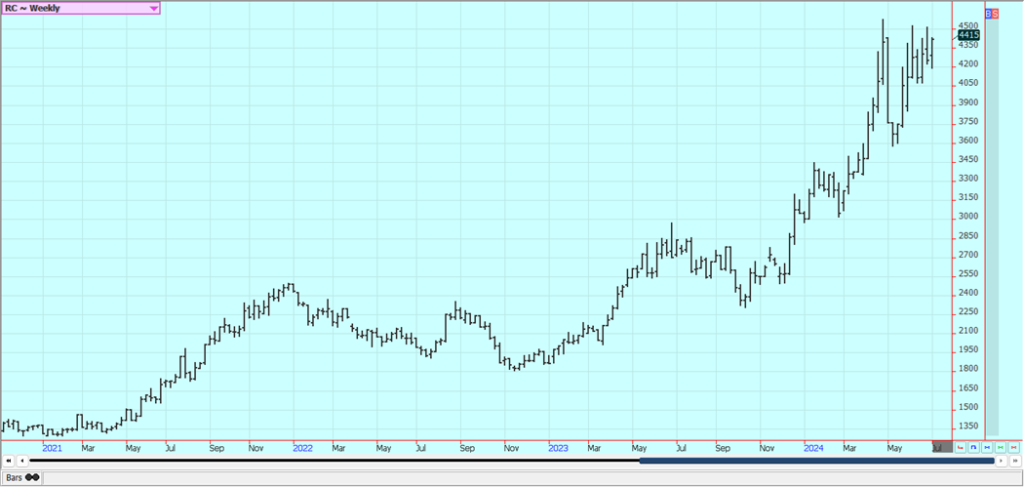
Sugar: New York and London closed mostly lower in light volume trading after the July 4th holiday as harvest progress in Brazil was the important fundamental but as world supplies remain rather tight. Harvest yields of Sugarcane in Brazil have been disappointing so far. Trends are mixed to up on the dai-ly and weekly charts. There are still ideas that the Brazil harvest can be strong for the next few weeks amid dry harvest weather. Harvest weather is called good in center-south Brazil.
Weekly New York World Raw Sugar Futures
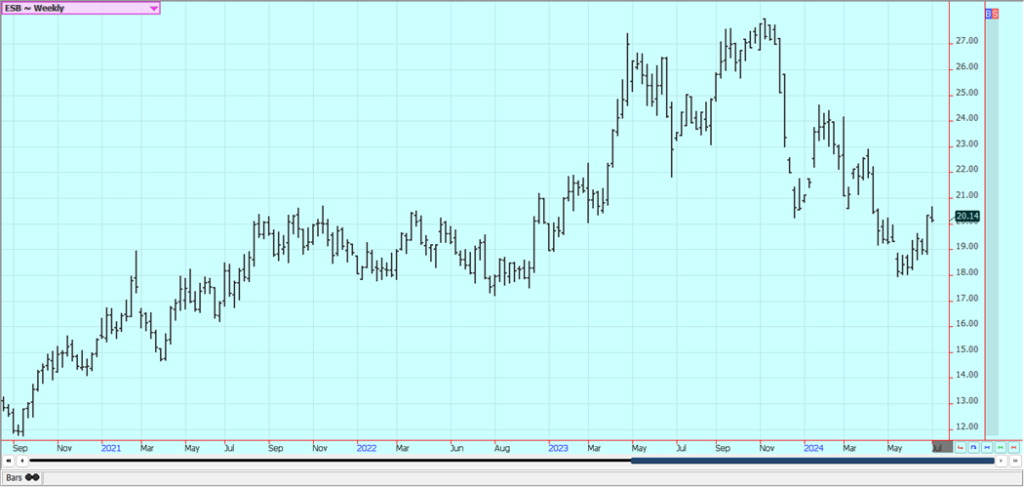
Weekly London White Sugar Futures

Cocoa: New York and London both closed a little lower last week and chart trends are down. Produc-tion concerns in West Africa as well as demand from nontraditional sources along with traditional buyers keep supporting futures, but this support is running its course and the market is searching for a new bullish fundamental. Production in West Africa could be reduced this year due to the extreme weather which included Harmattan conditions. The availability of Cocoa from West Africa remains very restricted.
Weekly New York Cocoa Futures

Weekly London Cocoa Futures
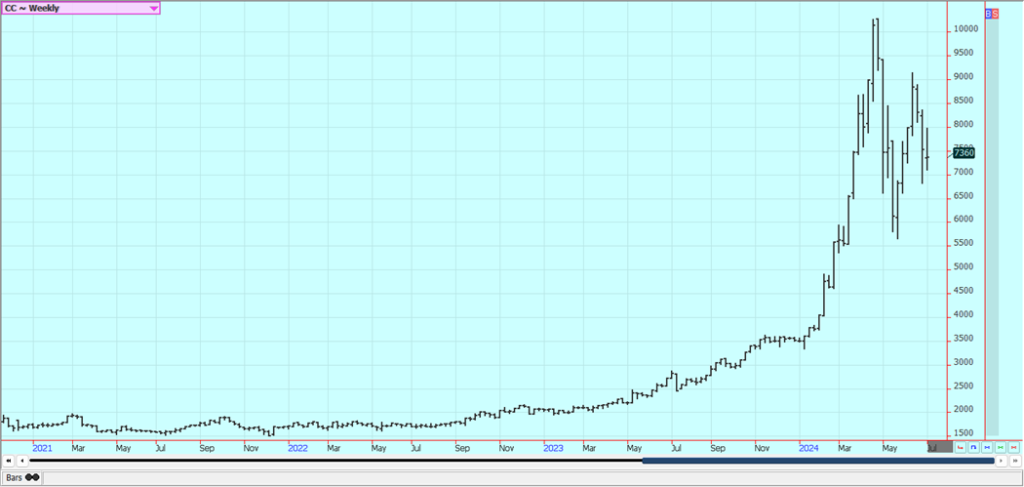
__
(Featured image by consolersafari via Unsplash)
DISCLAIMER: This article was written by a third party contributor and does not reflect the opinion of Born2Invest, its management, staff or its associates. Please review our disclaimer for more information.
This article may include forward-looking statements. These forward-looking statements generally are identified by the words “believe,” “project,” “estimate,” “become,” “plan,” “will,” and similar expressions. These forward-looking statements involve known and unknown risks as well as uncertainties, including those discussed in the following cautionary statements and elsewhere in this article and on this site. Although the Company may believe that its expectations are based on reasonable assumptions, the actual results that the Company may achieve may differ materially from any forward-looking statements, which reflect the opinions of the management of the Company only as of the date hereof. Additionally, please make sure to read these important disclosures.
Futures and options trading involves substantial risk of loss and may not be suitable for everyone. The valuation of futures and options may fluctuate and as a result, clients may lose more than their original investment. In no event should the content of this website be construed as an express or implied promise, guarantee, or implication by or from The PRICE Futures Group, Inc. that you will profit or that losses can or will be limited whatsoever. Past performance is not indicative of future results.
Information provided on this report is intended solely for informative purpose and is obtained from sources believed to be reliable. No guarantee of any kind is implied or possible where projections of future conditions are attempted. The leverage created by trading on margin can work against you as well as for you, and losses can exceed your entire investment. Before opening an account and trading, you should seek advice from your advisors as appropriate to ensure that you understand the risks and can withstand the losses.

-

 Crypto1 week ago
Crypto1 week agoEthereum in 2025: Volatility, Maturity, and Strategic Renewal
-

 Crowdfunding2 days ago
Crowdfunding2 days agoSumar Inversión Closes 2025 With Solid Returns and Growing Trust
-

 Africa2 weeks ago
Africa2 weeks agoMorocco’s Rising Country Risk Profile Boosts Investor Confidence
-

 Markets1 week ago
Markets1 week agoSugar Markets Cautious Amid Surplus Outlook and Steady Demand
